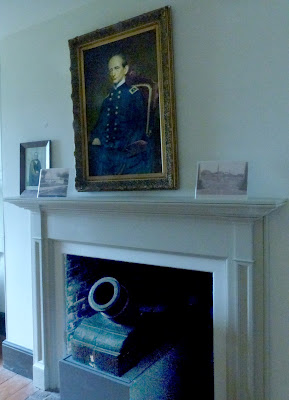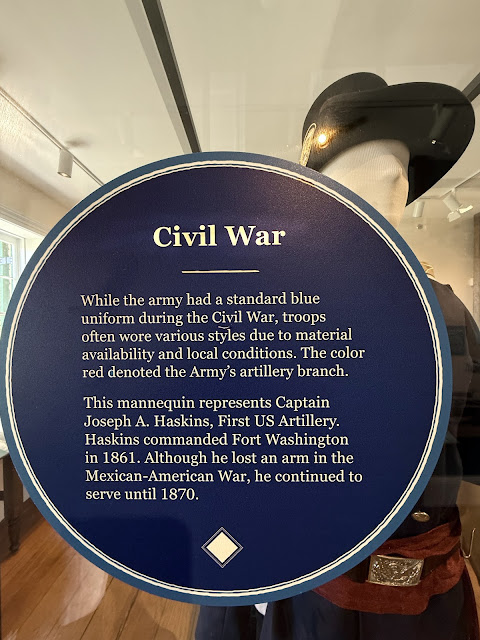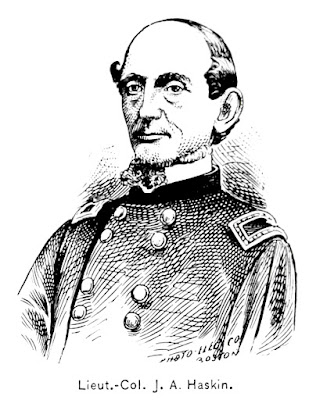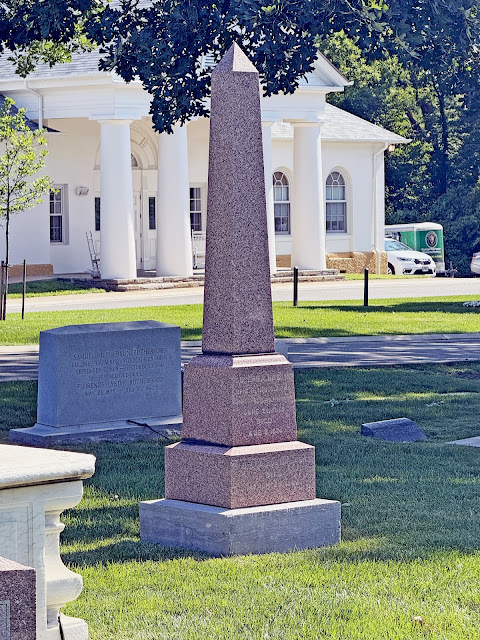Civil War
EXECUTIVE OFFICE,
Baton Rouge, La., January 10, 1861.SIR: The safety of the State of Louisiana demands that I take possession of all Government property within her limits. You are, therefore, summoned hereby to deliver up the barracks, arsenal, and public property now under your command.With the large force at my disposal this demand will be enforced. Any attempt at defense on your part will be a rash sacrifice of life.The highest consideration will be extended to yourself and command.THOMAS O. MOORE,Governor and Commander-in-Chief Militia of Louisiana.
Haskin surrendered. (See: Haskin's report to Colonel Cooper, Jan. 11, 1861.) The New York Herald covered the story the next day in a article entitled Important from Louisiana. The National Republican had it on the 14th.
Mrs. Haskin wrote a letter, telling the story as she saw it, to a relative in Oswego, NY which found its way into the Oswego Times and on February 17, 1861 got reprinted in the Baton Rouge Daily Advocate in an article entitled A Woman in Arms.
In early February 1861, The Watertown Republican among other papers, found Haskin in Washington D.C. commanding an artillery company on Capitol Hill. Their dispatch points out that the war department approved of Haskin's surrender of the Baton Rouge Arsenal:
Maj. Haskins commands the company of artillery stationed opposite the eastern front of the Capitol. He was in command at Baton Rouge when that arsenal was taken by the State troops. The war department entirely approves of his conduct in surrendering.
The National Republican noted that during Lincoln’s inauguration on March 4th, 1861, “the tall form of General Scott” might have been seen “at the corner of Delaware avenue and B street north, near where Captain Barry's artillery and Major Haskin's company were stationed.”
Haskin arrived to command Fort Washington —where his portrait hangs— on April 15, 1861, a day after the surrender of Fort Sumpter and Lincoln's call for 75,000 men to defend Washington. Fort Washington was the only fort defending Washington at that time.
On May 27th, The Evening Star noticed that:
Major Haskin, commandant of Fort Washington, has thoroughly strengthened that fortification by mounting 32 pound guns, erecting furnaces for heating shot, filling the magazines with ammunition, preparing hand grenades, bombs, etc. The place will be further strengthened by the erection of a battery on the hill behind the fort.
The Fort Washington Museum in an exhibit of the various uniforms worn at Fort Washington has this Civil War Officer's Uniform with a pinned up left sleeve representing Joseph Abel Haskin:
Civil WarWhile the army had a standard blue uniform during the Civil War, troops often wore various styles due to material availability ad local conditions. The color red denoted the Army's artillery branch.This mannequin represents Captain Joseph A. Haskins, First US Artillery. Haskins commanded Fort Washington in 1861, Although he lost an arm in the Mexican-American War, he continued to serve until 1870.
Haskin remained at Fort Washington until Dec. 20, 1861. He was at Ft. Taylor, Key West, Florida until May 15, 1862. He commanded the Defenses of Washington North of the Potomac through 1864.
He led a brigade at the Battle of Fort Stevens. This map by William J. Clipson from B. F. Cooling's Jubal Early's Raid on Washington, shows Haskin's brigade on the right of the Union line as the VI Corps moved out against the Confederates on the afternoon of July 12th 1864.Lieut.-Col. J. A. Haskin from History of the Ninth and Tenth Regiments Rhode Island Volunteers, and the Tenth Rhode Island Battery, in the Union Army in 1862 by William Arnold Spicer, 1892 "Photo Elec Co. Boston"
As Cullum put it, Haskin was “in the trenches during the attack upon the city, July 11–14, 1864.”
The Chrysler Museum has this 1865 Gardner photo of General Joseph Abel Haskin and Staff. Haskin received the brevet rank of Brigadier General in 1865.
















No comments:
Post a Comment